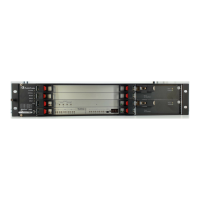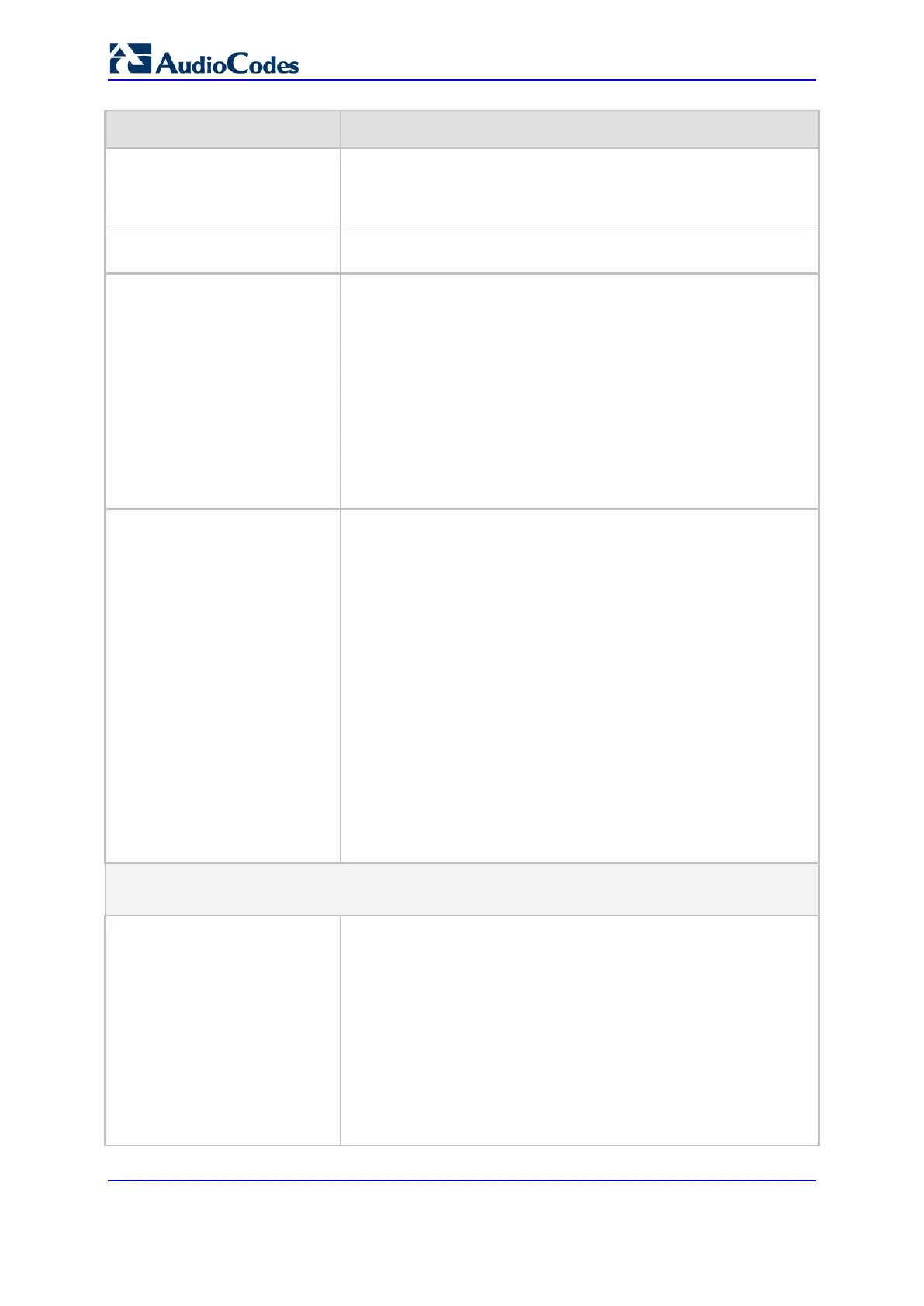User's Manual 980 Document #: LTRT-89730
Mediant 3000
Parameter Description
Note: When using the ini file to configure the device to support
several ISDNOutCallsBehavior features, add the individual feature
values. For example, to support both [2] and [16] features, set
ISDNOutCallsBehavior = 18 (i.e., 2 + 16).
[ISDNOutCallsBehavior_x] Same as the description for parameter ISDNOutCallsBehavior, but
for a specific trunk ID.
ISDN NS Behaviour 2
[ISDNNSBehaviour2]
Bit-field to determine several behavior options that influence the
behavior of the Q.931 protocol.
[8] NS BEHAVIOUR2 ANY UUI = Any User to User Information
Element (UUIE) is accepted for any protocol discriminator. This
is useful for interoperability with non-standard switches.
[16] NS BEHAVIOUR2 DISPLAY = The Display IE is accepted
even if it is not defined in the QSIG ISDN protocol standard.
This is applicable only when configuration is QSI.
[64] NS BEHAVIOUR2 FAC REJECT = When this bit is set, the
device answers with a Facility IE message with the Reject
component on receipt of Facility IE with unknown/invalid Invoke
component. This bit is implemented in QSIG and ETSI variants.
[PSTNExtendedParams] Determines the bit map for special PSTN behavior parameters:
[0] = (Default) Applicable for NI-2 ISDN and QSIG "Networking
Extensions". This bit (i.e., bit #0) is responsible for the Invoke ID
size:
If this bit is not set (default), then the Invoke ID size is
always one byte, with a value of 01 to 7f.
If this bit is set, then the Invoke ID size is one or two bytes
according to the Invoke ID value.
[2] = Applicable to the ROSE format (according to the old QSIG
specifications). This bit (i.e., bit #1) is responsible for the QSIG
octet 3. According to the ECMA-165 new version, octet 3 in all
QSIG supplementary services Facility messages should be
0x9F = Networking Extensions. However, according to the old
version, the value should be 0x91 = ROSE:
If this bit is not set (default): 0x9F = Networking Extensions.
If this bit is set: 0x91 = ROSE.
[3] = Use options [0] and [2] above.
Note: For the parameter to take effect, a device reset is required.
NFAS Parameters
NFAS Group Number
[NFASGroupNumber_x]
Defines the ISDN Non-Facility Associated Signaling (NFAS) group
number (NFAS member), per trunk.
[0] = (Default) Non-NFAS trunk.
[1] to [12] = NFAS group number.
Trunks that belong to the same NFAS group have the same
number. With NFAS, you can use a single D-channel to control
multiple PRI interfaces.
Notes:
For the parameter to take effect, a device reset is required.
The parameter is applicable only to T1 ISDN protocols.
The x in the ini file parameter name denotes the trunk number,

